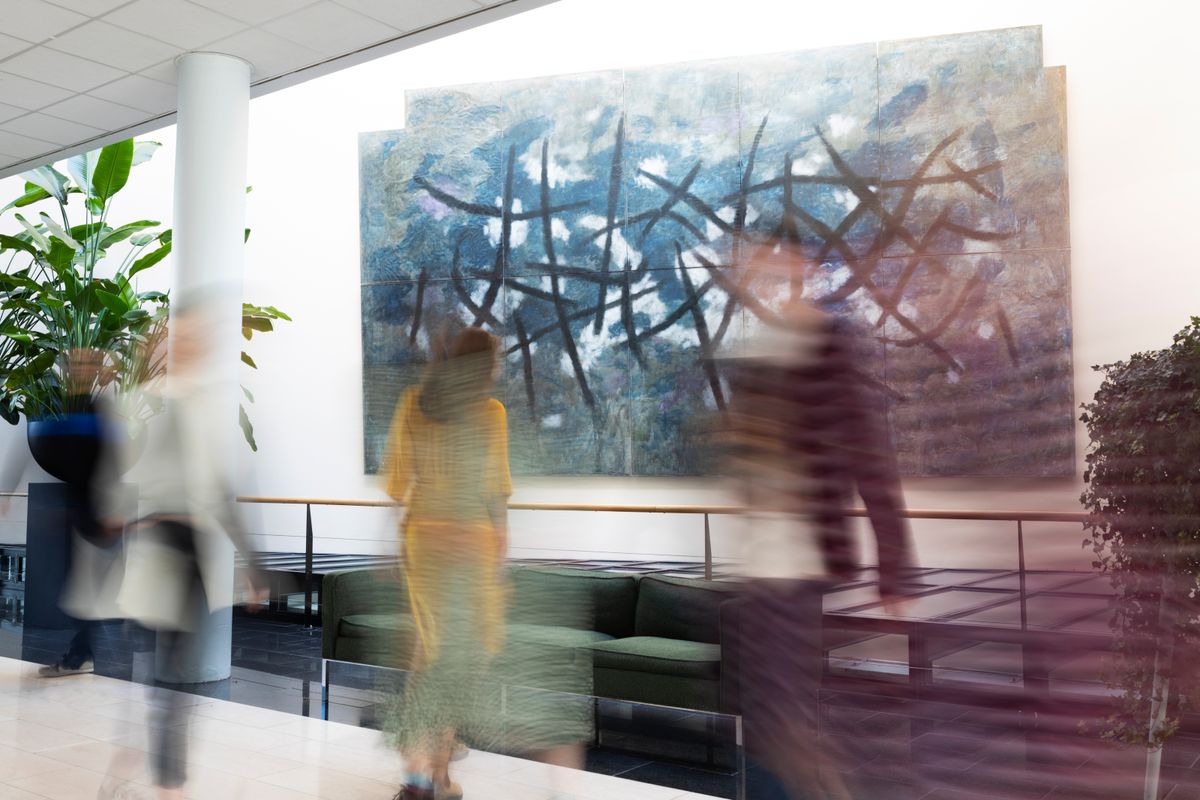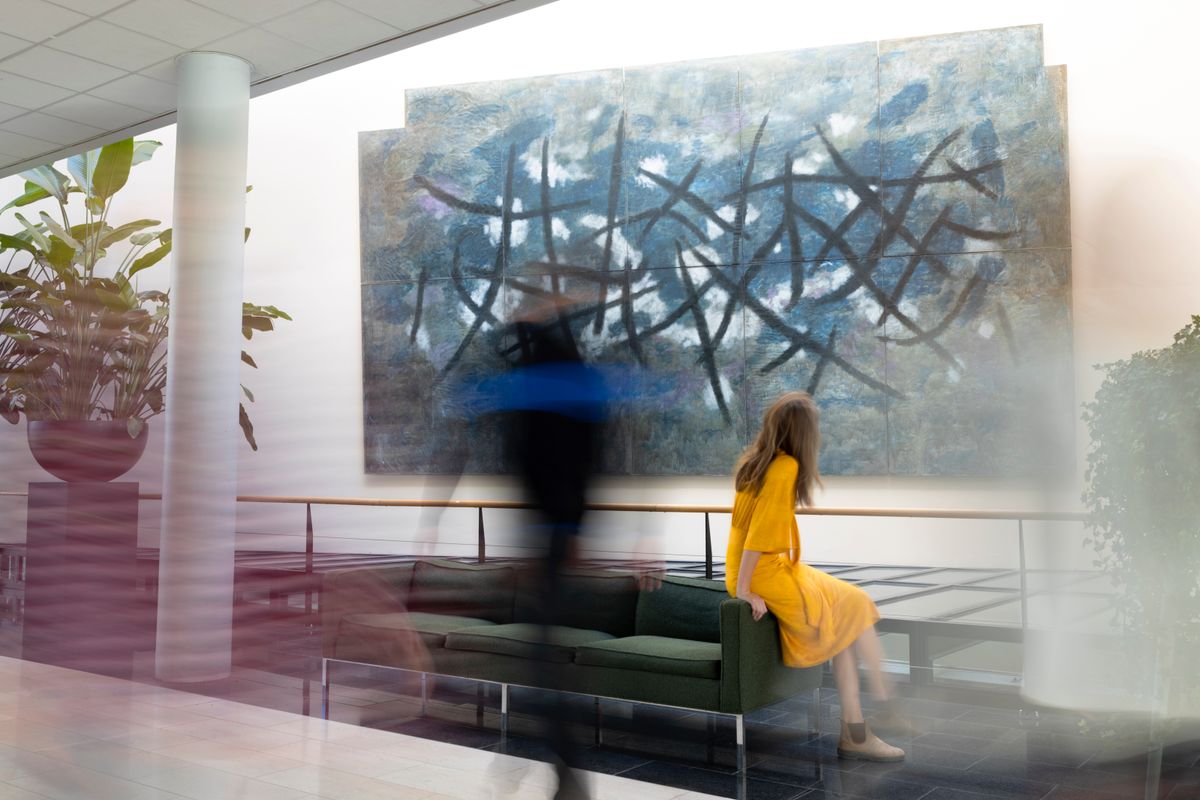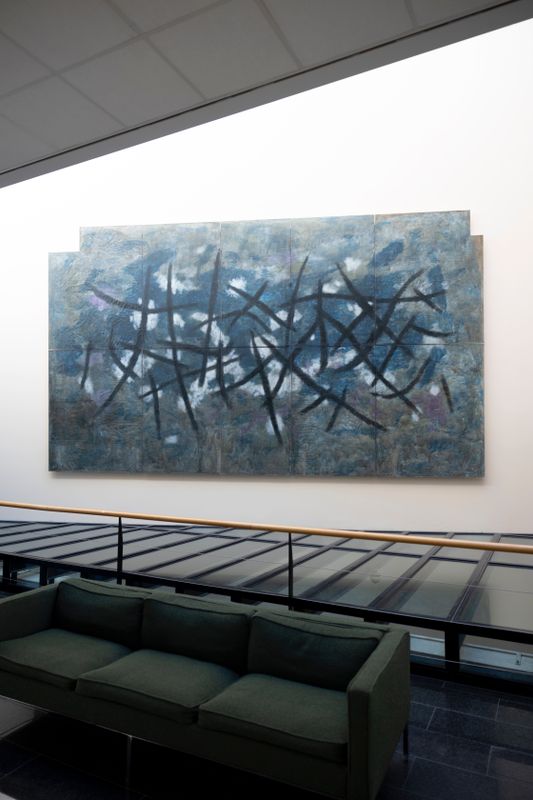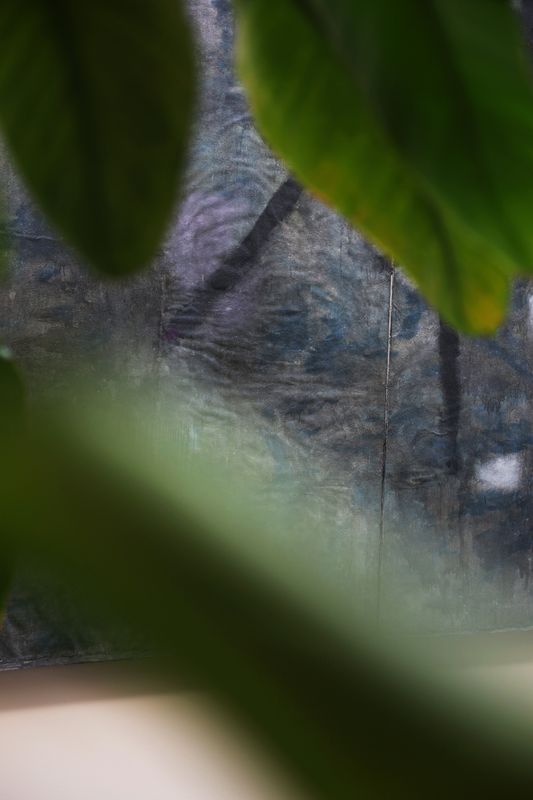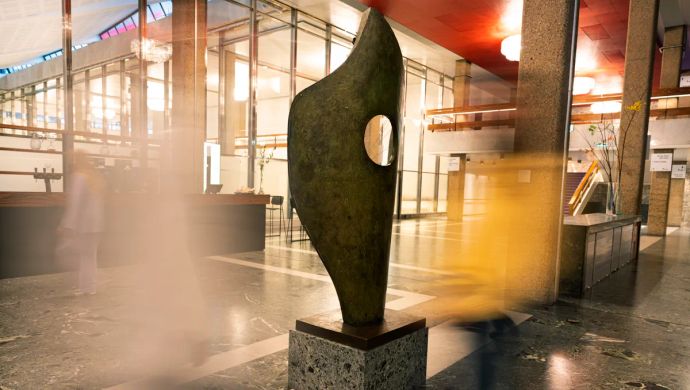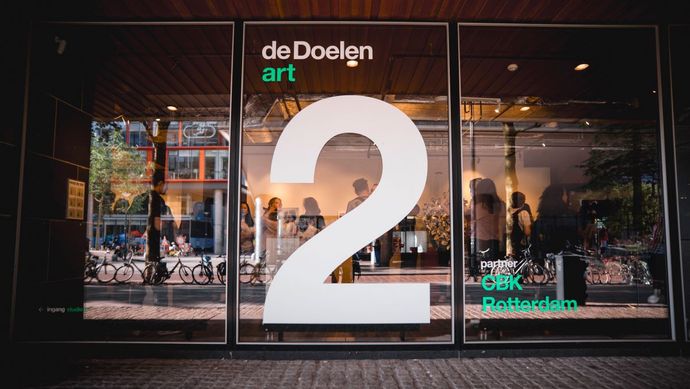Louis van Roode | Wall painting

Artist: Louis van Roode (1914-1964)
Artwork: Mural (1961/2022)
Collection: Rotterdam municipal collection
Acquisition: BKOR/CBK Rotterdam
Louis van Roode is one of the most prominent artists of the post-war period in Rotterdam. Van Roode created sculptures, murals, and mosaics and was a mentor to many artists. Along with Benno Wissing and Wally Elenbaas (both represented in de Doelen collection), he was part of the first post-war artist group in Rotterdam: Groep R.
In the fall of 1963, Louis van Roode was assigned de Feestzaal by the Doelen architects. Armed with an advance payment of seven hundred guilders, he got to sketching. He envisioned a voluptuous, cosmic bronze relief with curves and crannies, and coloured glass– not glass in concrete, as was common in those days, but glass in bronze. This was considered a bold experiment. In order to convince the architects of his idea, he created a small model and invited them for a viewing in his studio. Unfortunately, we don’t know what their reaction was, but according to Louis van Roode's daughter, the original idea was rejected because the work would have a detrimental effect on the acoustics of de Feestzaal.
The artist’s untimely death in 1964 prevented the realization of an improved artwork. In 2022, de Doelen finally acquired a work by his hand. An intriguing, abstract mural taken from the former Dijkzigt Hospital, made in 1961, found a second home in the foyer of the Willem Burgerzaal. The mural was restored by Annelies Toebes.
It would turn out to be van Roode’s final commission, and most of it was painted by his assistant the artist Woody van Amen. In 1960, van Roode wrote the following about this work: 'This is the idea behind it: the branches express an association with nature but also symbolize unity – just like the different departments of a hospital working together. But the design is concise because the focus should be on the mural itself. I don't want to plan and philosophize too much so that I can paint the mural spontaneously.'
Many of his works can be found throughout the city, such as De reis van Erasmus (1954) on the Holbeinhuis on the Coolsingel and the almost sixty-meter-high glass and concrete façade of the former post office, now Post CS (1959).

